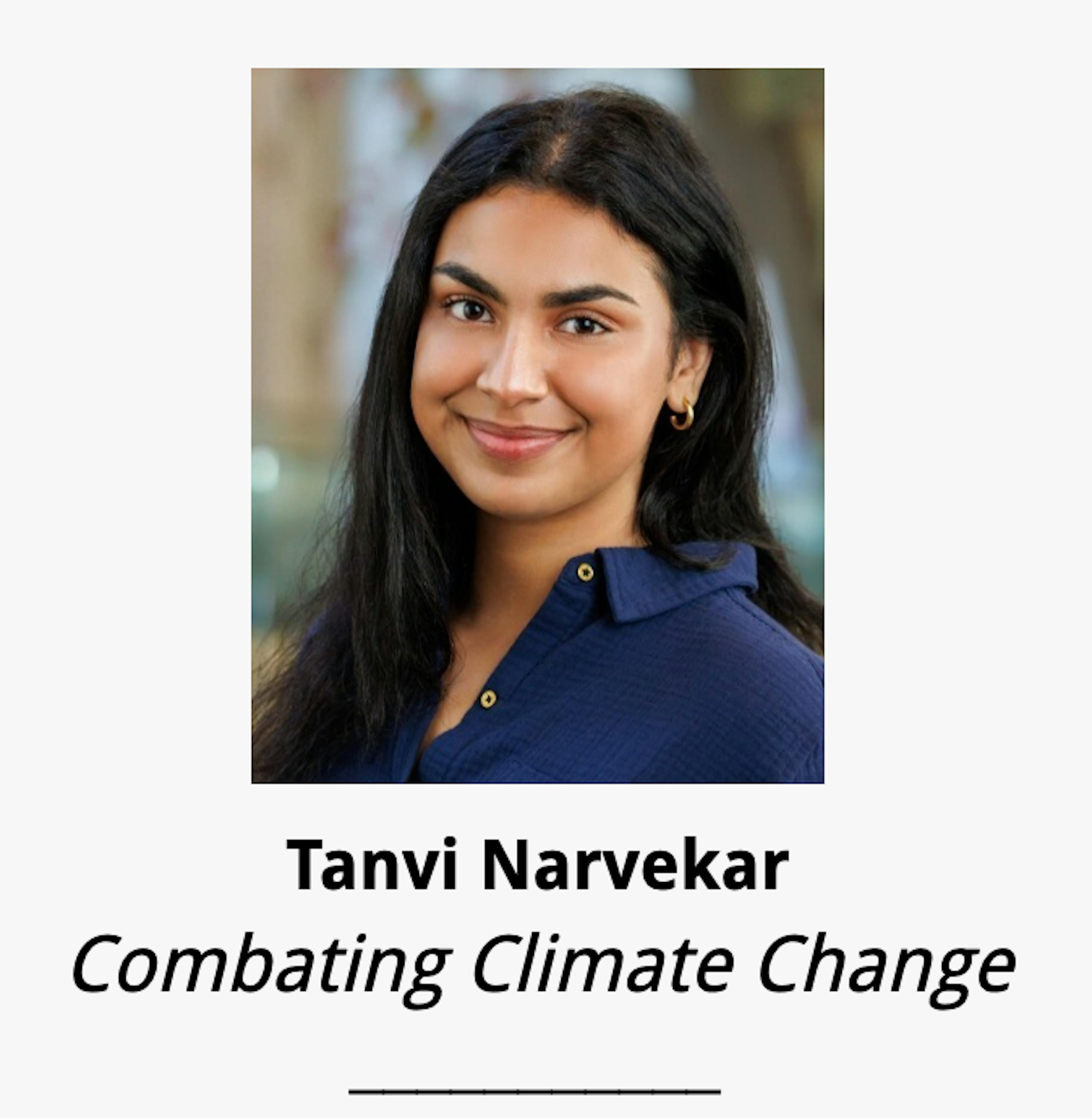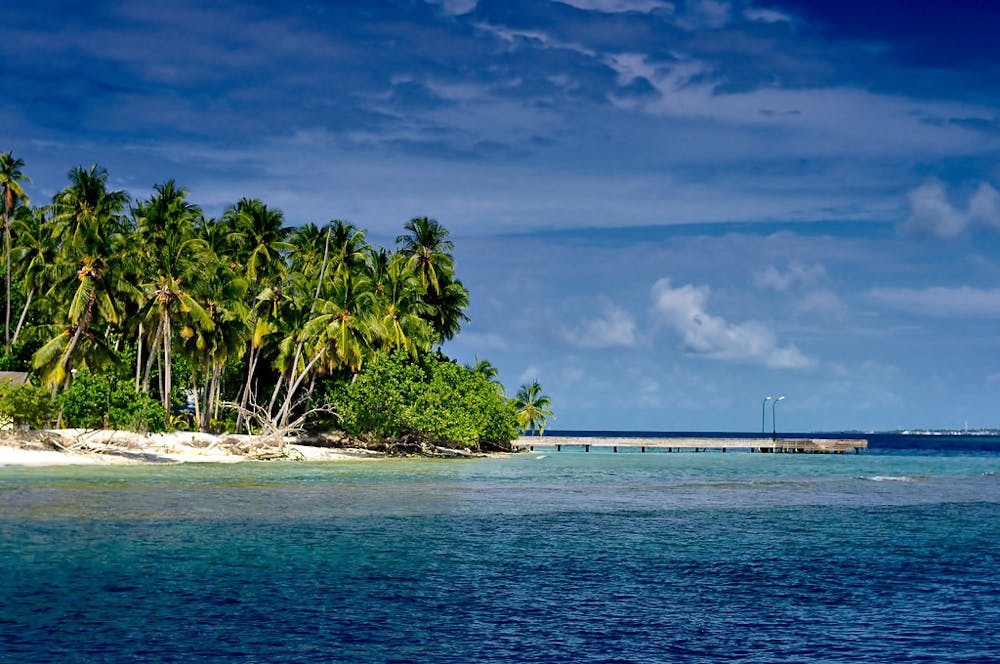
What would you do if the island you were living on was sinking? While this is definitely not an easy question to answer, it is a question that those who are living on many small, tropic islands are facing. Inundation is a threat that many islands are now facing due to climate change and rising sea levels. Let’s discuss what rising sea levels mean for island nations (and possibly even larger continents).
In an email to The News-Letter, Thomas Haine, a professor in the Department of Earth and Planetary Sciences, discussed catalysts for rising sea levels. The main one is climate change, which leads to a cascade of other effects. First, surface water that is naturally stored on land, such as groundwater, is diminishing in some areas. Second, land and ocean ice melts due to rising atmospheric temperatures, leading to increased liquid water content in seas. Third, oceans are said to have been undergoing thermal expansion, which causes water molecules to take up more volume, increasing ocean volume. Haine also mentioned that there are distinctions between sea levels locally and globally.
“Sea levels have risen about 0.2m since 1900. This is for global sea level. There are [also] regional changes in sea level too,” he wrote.
Apart from the increasing threat of inundation, rising sea levels also pose other threats to islands and coastlines. Rising sea levels threaten both ocean and land food sources. For the Hawaiian islands, the sea level rise affects coral reefs and intertidal zones. Intertidal zones can provide food such as limpets, urchins and seaweed, which locals consume. With rising sea levels, salt from the ocean contaminates soil, which prevents usual farming.
For the island nation of Tuvalu, for example, rising sea levels also brings other issues like “climate-related illnesses.” Rising ocean temperatures lead to increased coral bleaching, a phenomenon where beneficial algae leaves the coral. This coral bleaching leads to an increased presence of a dangerous microalgae called Gambierdiscus toxicus, which releases ciguatoxins.
If fish eat these microalgae, the ciguatoxins settle inside them. If humans eat these fish, the ciguatoxins settle inside them, leading to ciguatera fish poisoning. With an increased frequency of such illnesses, Tuvalu has set up their own “specialist department” focused on these climate-related illnesses.
The greatest threat is the inundation and flooding of island structures. But what can be done regarding these rising sea levels and the threat of inundation?
One solution to combat the effects of rising sea levels is building sea walls. Seawalls, like the Jakarta Bay Seawall, are made with sturdy materials and work to prevent water from going inland which would occur as sea levels rise. Especially with flooding due to storms, such seawalls could help with the water rise from ruining structures close to the coast. Other options include building energy walls and artificial islands.
But Haines noted that this solution isn’t perfect.
“It often has undesirable side-effects, however, like beach erosion. Plus the fixes you suggest don’t address the other negative impacts of CO2 emissions on the climate+environment. E.g., they don’t affect ocean acidification or global warming,” Haine wrote.
Sea walls, artificial islands and energy walls focus on the aftereffects of rising sea levels, but what about preventing the rising sea levels and increasing ocean temperatures prior to the aftereffects? Solar geoengineering is a broad term for techniques that involve limiting the amount of sunlight that reaches the ocean, therefore hoping to reduce the increase of temperatures.
One such technique is marine cloud brightening. Daniel Harrison, the principal investigator of the Marine Cloud Brightening for the Great Barrier Reef project, aims on spraying saltwater drops on marine stratocumulus clouds to add brightness to these clouds, therefore allowing them to reflect back more sunlight. Marine cloud brightening could not only aid with cooling the ocean but also preventing further side effects associated with ocean warming like coral bleaching.
However, Haine claims that such geoengineering fixes require caution.
“The reasons are: (i) There are probably unintended consequences of the fix, (ii) The fix might need to be maintained indefinitely (at considerable cost), (iii) The fix doesn’t address other negative anthropogenic impacts on climate+environment,” he says,“ he wrote. “For smaller time scales, this geoengineering fix may not be all bad. “The suggestion that it’s a temporary fix to buy time for a permanent solution (e.g., drawing down atmospheric CO2) is a good idea.”
Another solution is relocation and leaving the island nation in risk of being inundated. New Zealand used to offer the Pacific Access Category Resident Visa that residents of island nations Kiribati, Tuvalu, Fiji and Tonga could apply for to relocate to New Zealand. While this visa was not instituted for the reasons of climate change, such special categories for visas could be opened up in the future for climate change reasons.
But this should be the worst-case scenario. We have to consider the ethical implications of telling residents of island nations to relocate as the best option to escape rising sea levels. They would have to leave their home and community. In addition, assimilating into a new, larger country will not be easy. Therefore, it is important that we try to combat rising sea levels before they increase beyond control.
The effects of rising sea levels in a larger city show us that it’s not only small islands like Tuvalu that can be affected by rising sea levels. Significant sea level rises can very well start to affect coastal cities like New York. Therefore, the issue of rising sea levels is not just a problem for island nations to fix.
Tanvi Narvekar is a senior from the Bay Area, California majoring in Neuroscience and Psychology. Combating Climate Change is an ode to her passion for climate change action and helping with its mitigation. The goal of the column is to educate about current events and future action regarding climate change.





